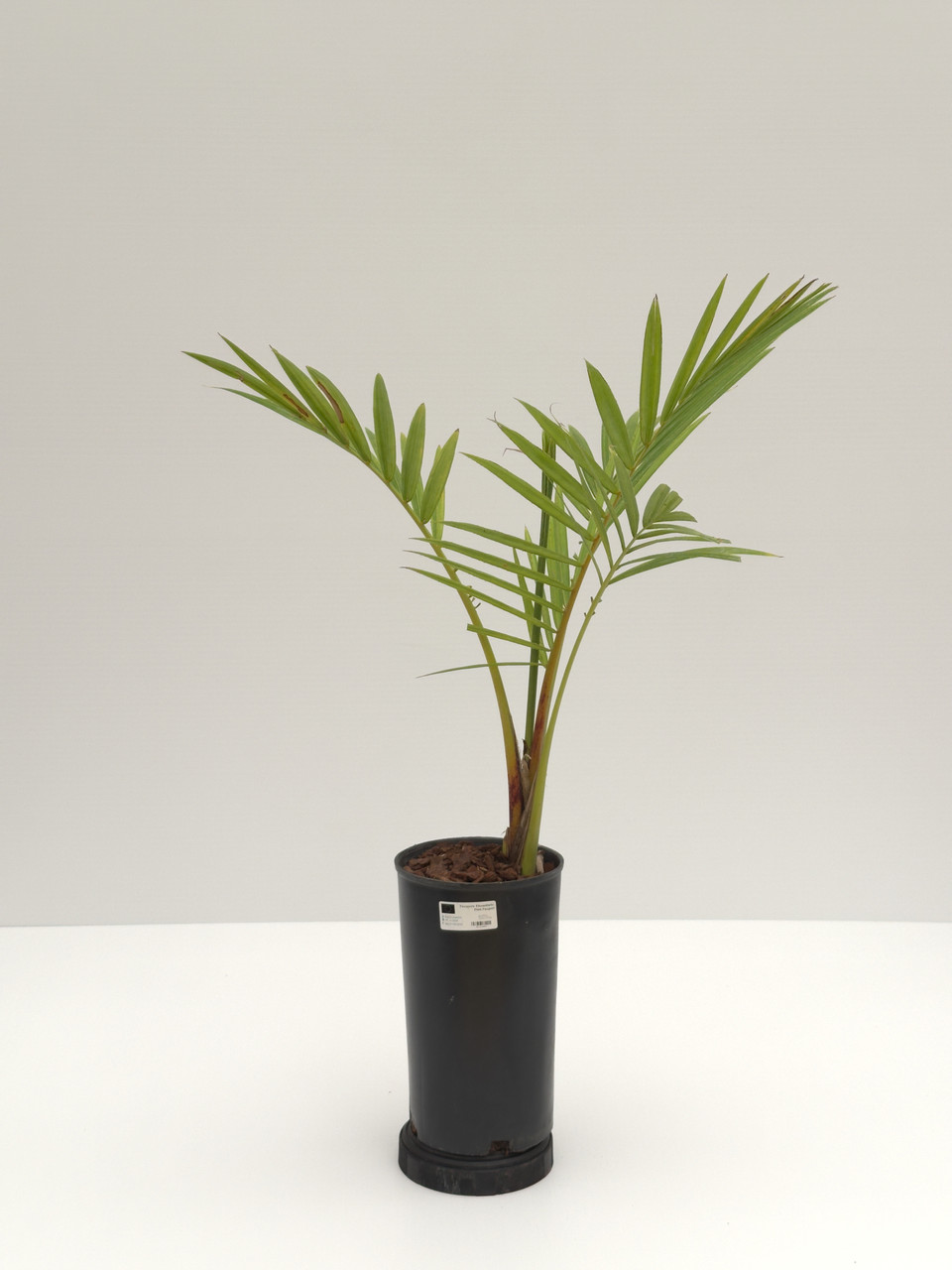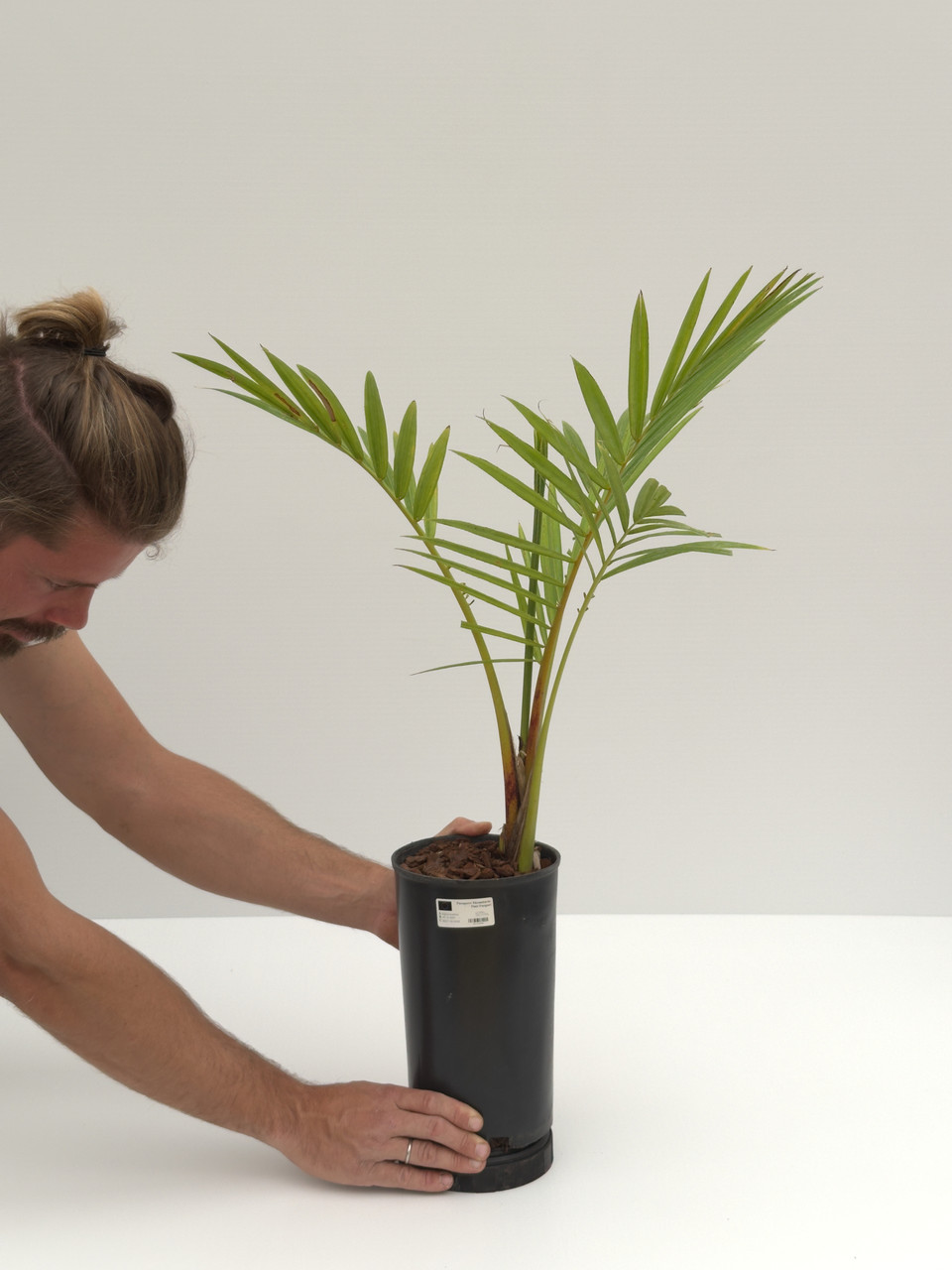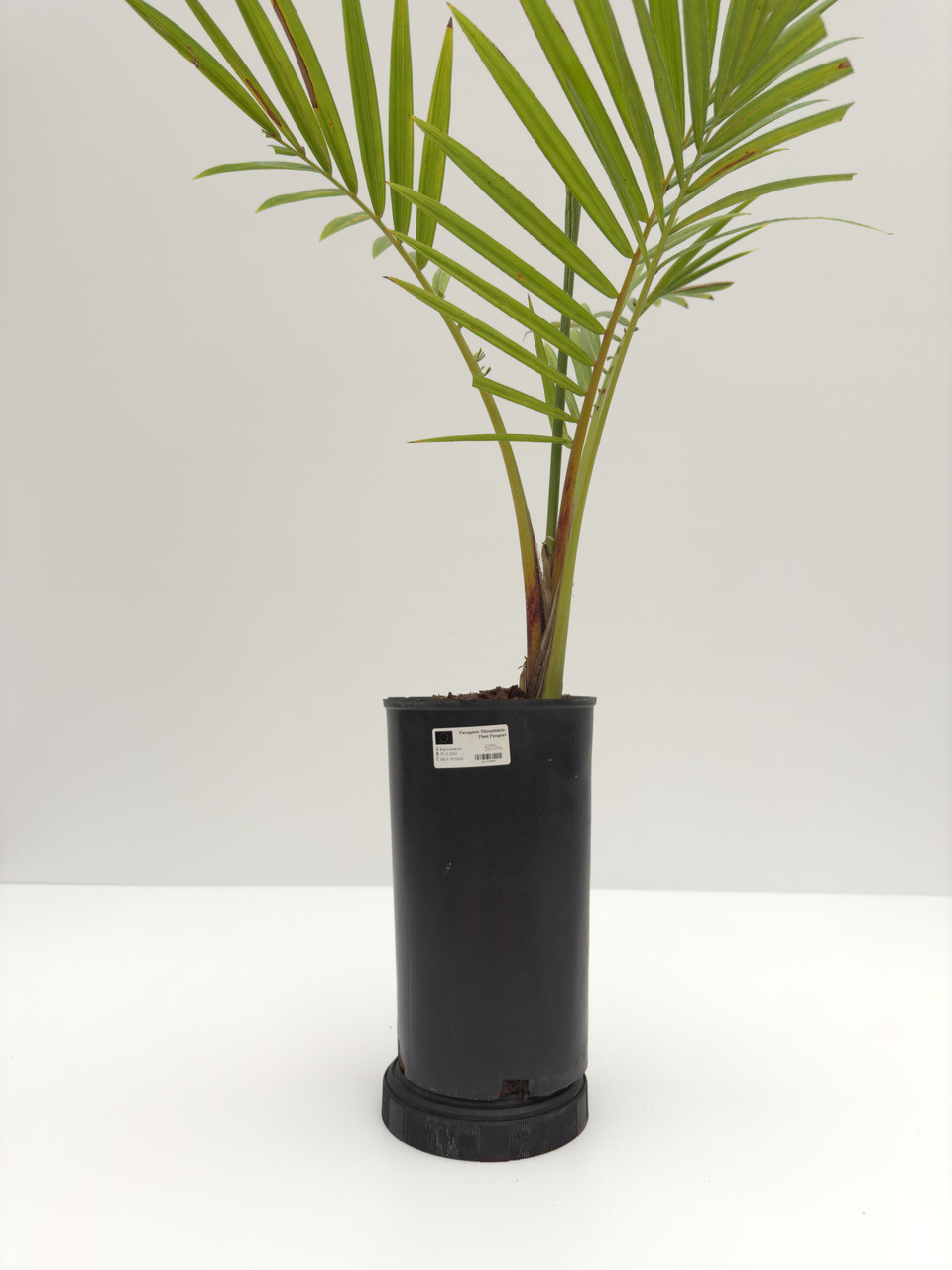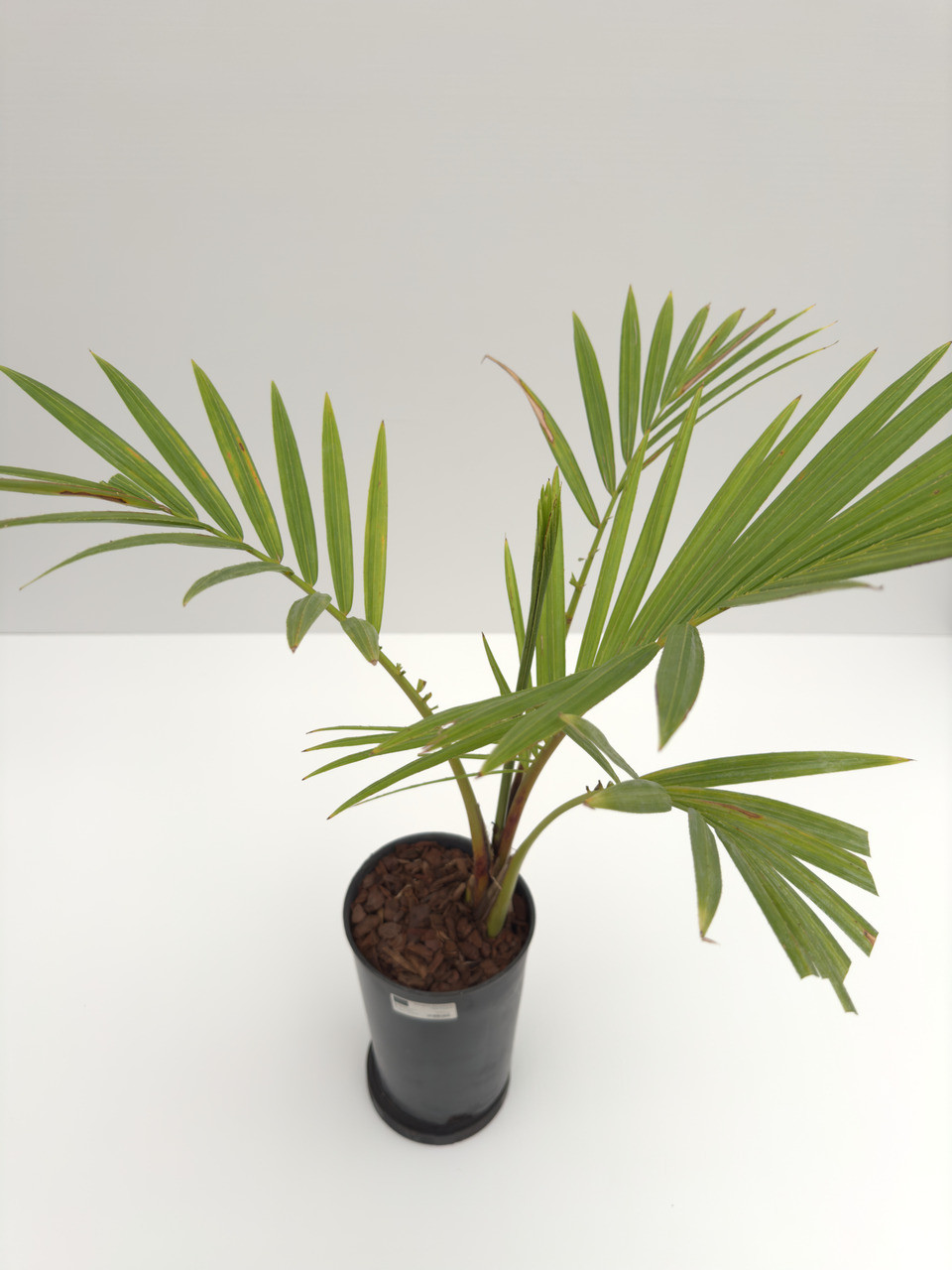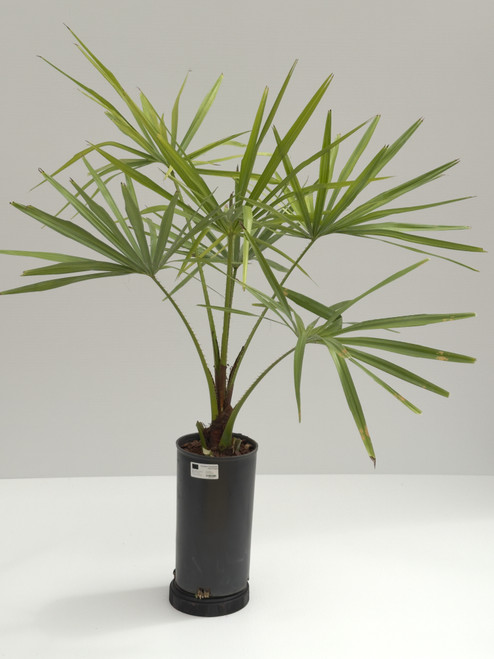Product Description
Habitat and Distribution
South Africa. Cape Provinces, KwaZulu-Natal, and Mozambique. The 'natural' distribution of the Kosi palm is restricted to a small area stretching from just south of Kosi Bay to 40 km or further north of Maputo. The population at Mtunzini is descended from cultivated trees. These trees are found on seasonally inundated dunes, and have pneumatophores (breathing roots) like mangroves. (plantzafrica.com H.F. Glen Natal Herbarium)
Description
Tree, often up to 16 m tall, rarely stemless, usually solitary, this genus is monoecious, also monocarpic. Leaves pinnate, often very large; petiole unarmed; rhachis with small ascending spines, leaflets reduplicate (central fold up, like an upside-down V), linear, 450-?650 x 50 mm, margin and midrib spiny. The inflorescence (flower spike) is covered by an enormous sheath up to 3 m long, which falls away allowing the inflorescence to continue skywards (resembles a floral rocket launch!) Peduncle (flower stalk) covered by 2-ranked, imbricate, gaping bracts; branches and abbreviated flowering branchlets laterally compressed, laxly arranged or congested in one plane; bracts 2-ranked, imbricate. Flowers 2-ranked, female near base; males on upper part of spadix. Male flower with a 2-keeled bracteole; calyx tubular or 3-lobed; petals 3, free or nearly so; stamens 6 to many, free or joined. Female flower with an outer and an inner bracteole and a joined calyx and corolla; staminodial ring joined to corolla; anthers minute or not present; ovary 3-locular, with 1 ovule developing; style short with 3 stigmas or not present. Fruit 1-seeded, ovoid, 60-?90 x 30-?50 mm, covered with brown, imbricate scales arranged in vertical rows, each with a median groove; apex beaked. (plantzafrica.com H.F. Glen Natal Herbarium) Editing by edric.
Culture
Fresh seed grows easily once the outer scales have been removed. Seedlings need filtered sunlight, plentiful water and protection from wind. Very little, if anything, else is known about the cultivation of these palms. In particular, I have yet to see one attacked by a pest or disease. However, untreated fruits used for ornament may eventually be subject to attack by cigarette beetles and other similar insects. The usual treatments (freezing, fumigation, insecticide spray) are adequate to control this provided that the damage is noticed in time. (plantzafrica.com)
Likes full sun, and bad drainage. Given these conditions, they are very fast growing, one of the fastest of all palms. If you don't have a swamp, then give them lots of water. Needs at least a sub-tropical climate. Cold Hardiness Zone: 10b
Comments and Curiosities
Palms have the largest leaves of all trees, and Raphia has the largest leaves of all palms. One species of these monsters is indigenous to South Africa, and that is the majestic Kosi palm. (plantzafrica.com H.F. Glen Natal Herbarium)

